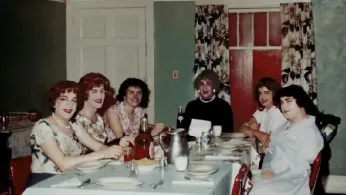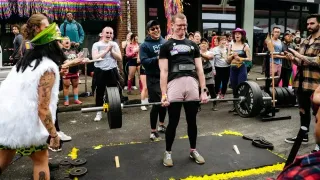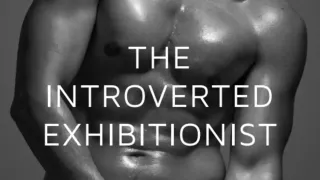
Nov 9
Hidden in Plain Sight: Casa Susanna and the Sacred Art of Queer Sanctuary
READ TIME: 4 MIN.
If you close your eyes and listen hard enough, you might hear laughter drifting through the trees and the click of a camera capturing a moment nobody else was allowed to see. Welcome to Casa Susanna: the Catskills farmhouse where, in an era of whispered secrets and locked closets, dozens of transgender women and cross-dressing men found the freedom to simply exist as themselves—a freedom most of the world still denied them.
Picture the scene: It’s the 1950s. Eisenhower is in office, skirts are full, and the very idea of wearing"the wrong clothes" in public could see you arrested, institutionalized, or worse. Yet, tucked away in upstate New York, a modest boarding house threw open its doors and said: “Come as you are. Or, perhaps, as you dream to be.”
Casa Susanna wasn’t just a house—it was a revolution by invitation only. The community found its way there through the kind of coded, careful word-of-mouth that only the deeply closeted know, and through the now-legendary magazine *Transvestia*, published by the pioneering Virginia Prince. Today, we might call it an analog Discord server.
The guests—often married, usually fathers, almost always living double lives—traveled from across the United States and beyond. For a precious weekend, they could slip into femininity, solidarity, and, above all, relief. As elder Diana Merry-Shapiro recalls in the PBS documentary, “People used to love to be here. They had total freedom. A total chance to be themselves”.
Every queer story worth retelling has a matriarch, and Casa Susanna had two. Susanna Valenti (who began life and military service as Tito Arriagada) and her wife, the irrepressible Marie Tonell, became legends for their hospitality and radical acceptance.
Marie—older, Italian, and “eccentric” in the best sense—welcomed her spouse’s clandestine community not as a burden, but as an extension of her family. She didn’t just accept Susanna; she hosted a sanctuary for everyone like her. Together, they created a world where difference was celebrated, not just tolerated.
Their mission was simple: let people be. And in a time when the law had other ideas, that was a quietly radical act.
What remains of Casa Susanna, physically, is little more than an overgrown plot and a house that’s long since gone to seed. But what endures—vividly, achingly—are the hundreds of color photographs snapped at the house in its heyday. These photos, rescued from attic boxes and family secrets, are a revelation: women smiling at garden parties, posing in A-line dresses, reading on porches, sharing coffee and confidences that would be unthinkable anywhere else.
They are proof—literal, visual, undeniable—that trans joy, trans community, and trans beauty have always existed. They just weren’t always visible.
The stakes at Casa Susanna were as high as the hemlines. This was the Lavender Scare era, when anti-queer hysteria drove people out of jobs, homes, and public life. Being caught in a dress could mean losing everything. And yet, for those precious days at Casa Susanna, the guests risked it all for a taste of authenticity.
Not everyone who passed through the house would describe themselves as transgender by today’s language; some identified as cross-dressers, some as transsexuals, and some never had words for what they were. But all of them shared the ache for a place where gender could be played with, explored, and finally, celebrated.
One visitor, Diana Merry-Shapiro, found the courage to transition later in life, eventually marrying a man, then a woman, and working as a computer programmer at Xerox—a testament to the many-layered, non-linear journeys that are still so common for trans and gender-nonconforming people.
Casa Susanna was not without its complexities. In a time when homophobia was rampant even within queer circles, the house was not a haven for gay men—a reminder that the queer community’s journey toward intersectional acceptance is ongoing. The language of the time—“transvestite,” “transsexual”—feels jarring now, but it was all these pioneers had.
The story of Betsy Wollheim, whose science-fiction writer father Donald Wollheim attended Casa Susanna, serves as a bittersweet reminder: “He had to be closeted about his cross-dressing,” she reveals, and the burden of secrecy sometimes spilled into family life. Queer history is family history, too.
The echoes of Casa Susanna ripple through every Pride parade, drag brunch, and online support group. Its legacy is the notion that liberation doesn’t come from grand gestures alone, but from the quiet, persistent work of making room for each other. In an era when anti-trans laws are again cropping up like weeds across the United States, the story of Casa Susanna is both a balm and a battle cry: safe spaces matter, and chosen family saves lives.
As the PBS documentary brings Casa Susanna’s story to new audiences, there’s an invitation for all of us: to remember the foremothers and foreparents who made joy possible, even if only for a weekend at a time. As one elder in the film puts it, “We found each other. We found ourselves. That’s what Casa Susanna was about”.
So, to the keepers of secrets and the seekers of truth: you are not alone, and you never were. The house in the woods is gone, but the promise of Casa Susanna—the promise of queer sanctuary—lives on in every act of courage, every flash of joy, and every community that dares to say, “Come as you are.”






